A steady flow of water passes along a horizontal tube from a wide section X to the narrower section Y, see figure. Manometers are placed at P and Q at the sections. Which of the statement A,B,C,D, E is most correct?

water velocity at X is greater than at Y
the manometer at P shows lower pressure than at Q
kinetic energy per m3 of water at X=kinetic energy per m3 at Y
the manometer at P shows greater pressure than at Y
The correct Answer is:D
From Bernoulli's theroem
P1+12ρv21=P2+12ρv22
and from equation of continuity
vy>vx ⇒ Px>Py ⇒ KEy>KEx
so option D is correct.
Topper's Solved these Questions
Similar Questions
Waster flows throgh a horizontal tube of variable cross section.The area of cross section at A and B are 4 mm2and2mm2 respectively. If 1 cc of water enters per seconds through. A find a. The speed of water at A, b. the speed of river at B and c. the pressure difference PA−PB.
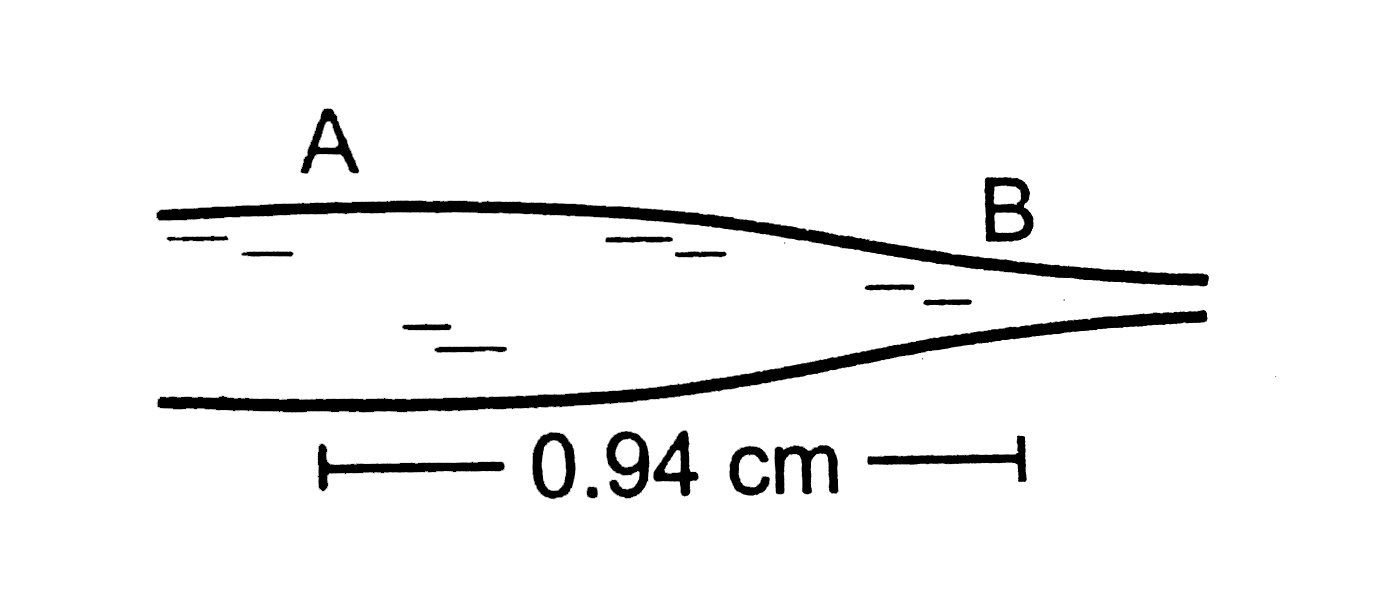 View Solution
View Solution(i) Air (density=ρ) flows through a horizontal venturi tube that discharges to the atmosphere. The area of cross section of the tube is A1 and at the constriction it is A2. The constriction is connected to a water (density=ρ0) tank through a vertical pipe of lenght H. Find the volume flow rate (Q) of the air through tube that is needed to just draw the water into the tube.
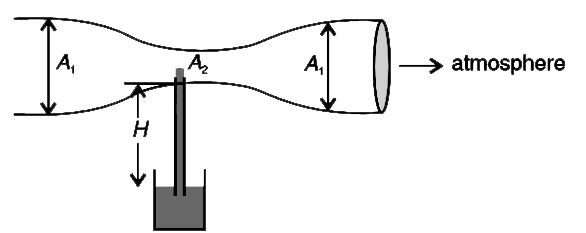
(ii) A non viscous liquid of constant density ρ flows in a stremline motion along a tube of variable cross section. The tube is kept inclined in the vertical plane as shown in the figure. The area of cross section of the tube at two points P and Q at heights of h1 and h2 are respectively A1 and A2. The velocity of the liquid at point P is v. Find the work done on a small volume ΔV of fluid by the neighbouring fluid as the small volume moves from P to Q.
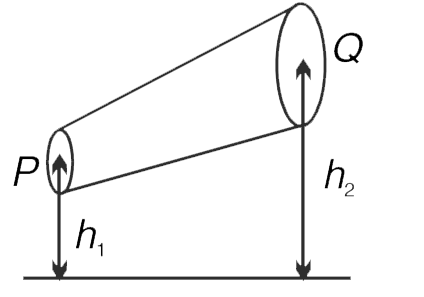 View Solution
View Solution
Knowledge Check
- Question 1 - Select One or More
A non-viscous liquid is flowing through a non-uniform pipe from section A to section B as shown in the figure. Cross sectional area of the pipe at A is less than that at B. Which of the following statements are correct?
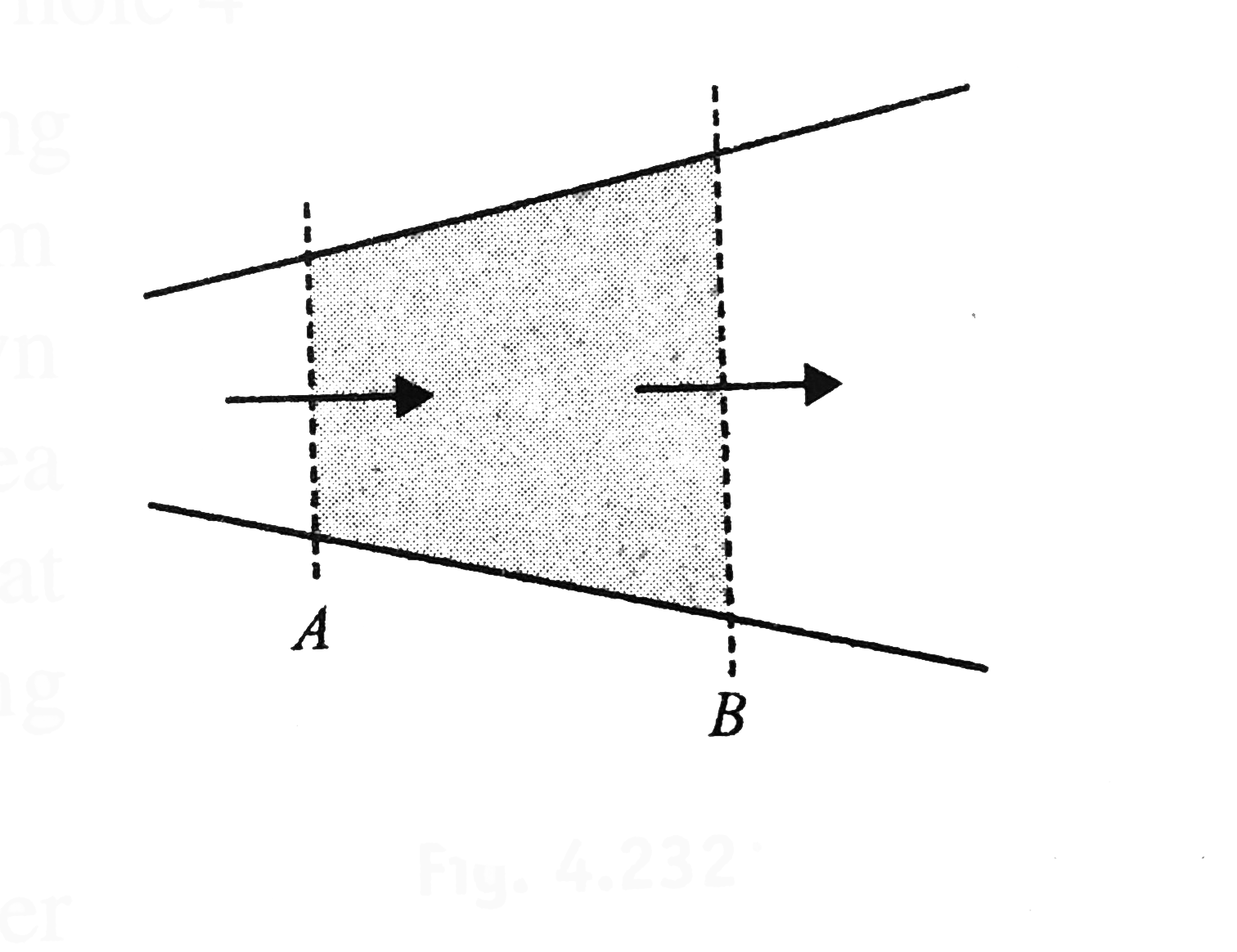 AThe pressure at A is greater than that at BBVelocity at A is greater than that at BCTotal energy per unit volume of the liquid is greater at A than at BDAxis of the pipe cannot be horizontal
AThe pressure at A is greater than that at BBVelocity at A is greater than that at BCTotal energy per unit volume of the liquid is greater at A than at BDAxis of the pipe cannot be horizontal - Question 2 - Select One
Water is flowing in a horizontal pipe ofnonuniform cross section. The velocities of water at points A and Bin the tube, are in the ratio of 4 : 1, what is the ratio of the diameters of the pipe at A and B ?
A1:1B1:2:C2:1D2:3 - Question 3 - Select One or More
A U-tube is held in a vertical plane such that its two limbs are vertical with middle portion horizontal as shown in the figure. Three liquids A, B and C are poured into it and in steady state their interfaces are as shown in the figure. Which of the following statements are correct?
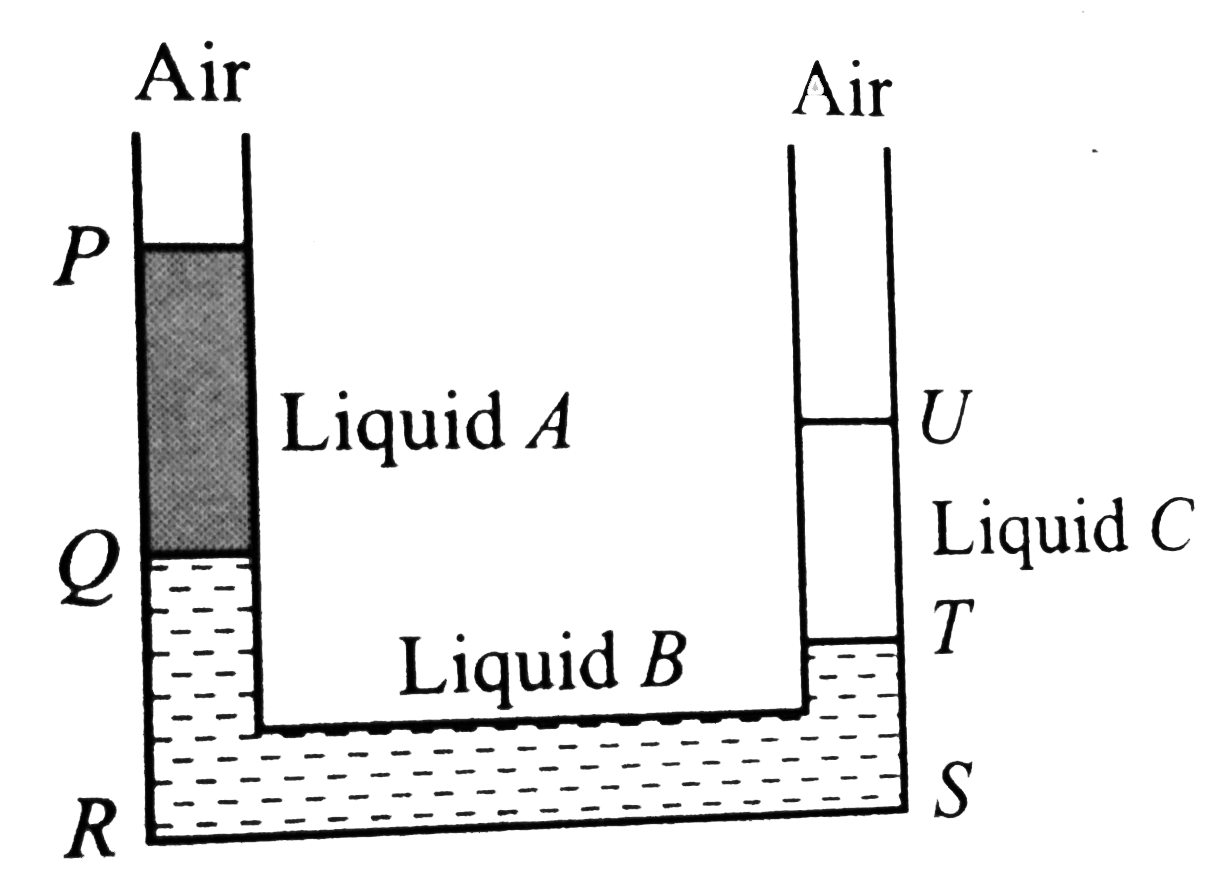 AHeight of column of liquid A is greater than that of C.BDensity of liquid A is less than that of liquid C.CDensity of liquid B is maximum among these three liquids.DPressure at R is greater than that at S.
AHeight of column of liquid A is greater than that of C.BDensity of liquid A is less than that of liquid C.CDensity of liquid B is maximum among these three liquids.DPressure at R is greater than that at S.
The pressure difference between two points along a horizontal tube through which water is flowing is 2.5 cm of mercury. Calculate the speed of water at a point of smaller cross section if the speed at a point of larger cross section is 2.61 ms−1.
View SolutionTwo manometric tubes are mounted on a horizontal pipe of varying cross-section at the section S1 and S2 (figure). Find the volume of water flowing across the pipe's section per unit time if the difference in water columns is equal to Δh.
 View Solution
View SolutionWater flows through a horizontal tube as shown in figure. If the difference of height of water column in the vertical tubes in 2cm and the areas of corss-section at A and B are 4cm2 respectively. Find the rate of flow of water across any section.
 .View Solution
.View SolutionWater flows in a horizontal tube of variable cross-section (figure). The area of cross-section at x and y are 40mm2 and 20mm2 respectively. If 10cc of water enters per second through x, find (i) the speed of water at x, (ii) the speed of water at y and (iii) the pressure difference Px−Py.
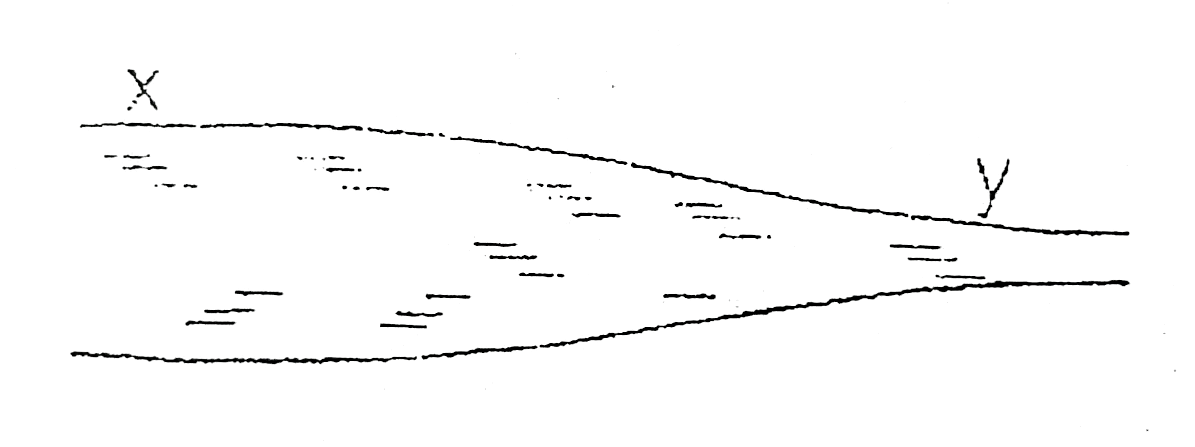 View Solution
View SolutionWater coming out of the mouth of a tap and falling vertically in streamline flow forms a tapering column, i.e., the area of cross-section of the liquid column decreases as it moves down. Which of the following is the most accurate explanation for this ?
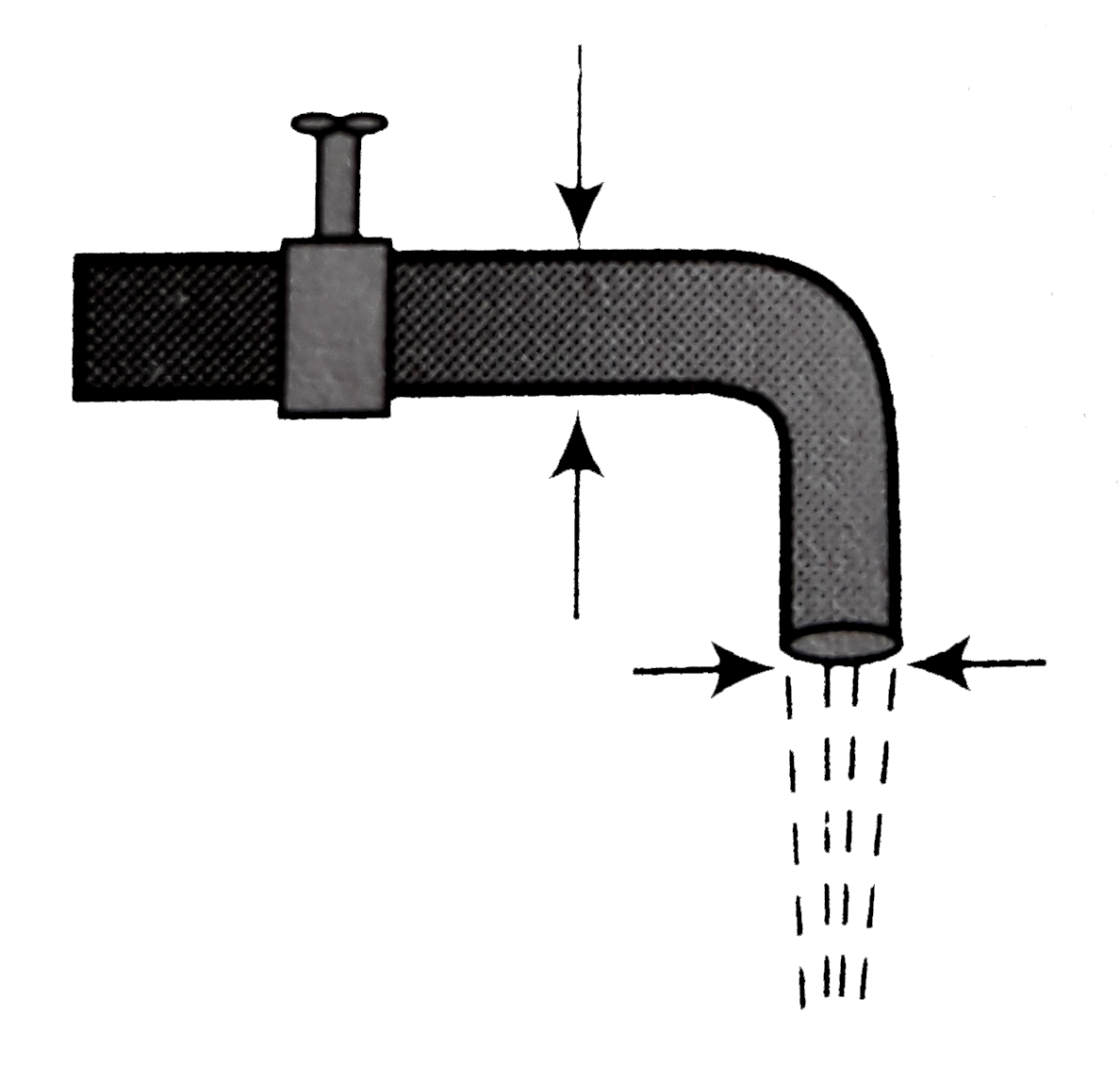 .View Solution
.View Solution

